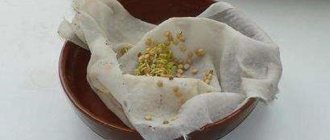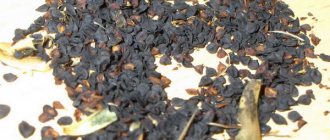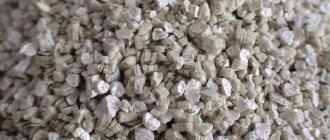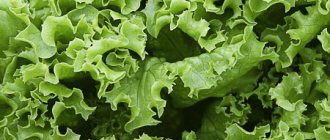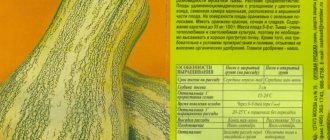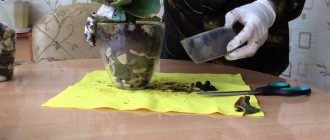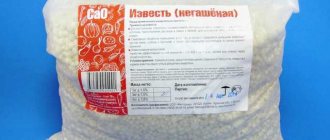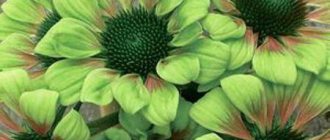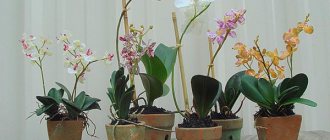planting ❀ growing ❀ care
Many gardeners consider flax to be an intrusive and difficult to remove pest. But he can't help but charm. Thin and graceful flax shoots are dotted with sessile narrow leaves and seem very unusual. But the flowers attract the main attention. From 2 to 5 cm in diameter in the best varieties, they captivate with their simple funnel-shaped shape and the beauty of their rounded petal lobes. Decorative varieties of flax decorate gardens from early summer until frost. They manage to produce easily recognizable capsule fruits, each of which contains 10 glossy, brown, flat seeds. Flowering flax is not only spectacular, but also unusual. Its flowers bloom for just one day. And even though they cannot be cut for bouquets and admired for many weeks, you should not be upset: new inflorescences open on the bushes tirelessly, and the constant setting of buds allows decorative flax to decorate the garden for several months without interruption.
Who will benefit from flax consumption?
Flax sprouts have the following effects on the body:
- Strengthen metabolism.
- They have a tonic effect.
- Strengthen the immune system.
- Improves the functioning of the cardiovascular system.
- Strengthens hair, nails, teeth.
Flax sprouts are recommended for pregnant and lactating women, as well as people with calcium deficiency in the body. Eating sprouts has a positive effect on osteochondrosis, osteoporosis, and fractures.
Helpful information
Daria Vorontsova
Amateur gardener. He is interested in growing various greens at home.
Despite the great benefits of flax for the body, they should not replace the treatment prescribed by a doctor.
People suffering from chronic diseases of the gastrointestinal tract are recommended to add flax sprouts and oil to their food. Enzymes and dietary fiber reduce acute manifestations of gastritis and gastric ulcers.
A daily serving of flax sprouts almost completely replenishes the body's daily need for vitamins and minerals. The use of the plant will be especially useful for chronic fatigue syndrome, vitamin deficiency and people in a state of increased stress.
Flax sprouts can be used by almost everyone, regardless of age and condition of the body. However, there are some contraindications:
- It is not recommended to add to food for children under 12 years of age.
- Exacerbation of peptic ulcer, inflammation of the large intestine.
- Stones in the liver, kidneys, gall bladder.
- Consuming with dairy products may cause increased gas formation.
Decorative flax: types and varieties
Decorative types of flax are used to decorate garden plots. If ordinary field flax has sky-blue flowers, then decorative types are full of white, red and even yellow flowers. About 25 types of flax have been bred for decorative floriculture, but only two of them are widely used - grandiflora flax and common flax. These are annual plants.
Flax grandiflora
A fairly massive flower about 60 cm high has large simple flowers up to 5 cm in diameter. Their color can be red, white, pink, and there is a flax variety with a red eye. Blooms from early June to September. The stems are densely branched at the top of the bushes, but at the bottom they are practically bare. The leaves, although small, are very bright. This flax is an unpretentious plant, undemanding to soil types, and does not have any special requirements for watering. Planting sites should be chosen that are sunny and without stagnant moisture - these are perhaps the only criteria that must be adhered to when growing flax. Annual decorative flax has a huge number of forms and varieties. The most common among them are: ✿ “Funny eyes”
- a snow-white variety of flax with an ink-red spot in the center of a cup-shaped flower, thanks to which the flowers really seem like an eye (this is one of the most spectacular monochrome plants for decorating a garden, along with hazel grouse) ✿
“Childhood”
- a pure white variety ✿
“Illusion”
- bright -red linen with a small eye and silk texture ✿
“Mars”
- an even brighter carmine with an elegant double eye ✿
“Azure”
- a dazzling blue variety with a pure heavenly tone and a white eye ✿
“Bright eyes”
- so bright that you can take your eyes off luxurious variegated flowering is simply impossible ✿
“Boogie-Woogie”
with salmon petals and cherry
- an apricot variety ✿ “Diamant”
- a snow-white variety of flax with a satin texture of the petals, which makes two-centimeter flowers unusually elegant ✿
“Seliger”
- a light blue variety with small flowers in large inflorescences - corymbs ✿
"Sadko"
- a lilac-colored variety with dark veins ✿
"Rumyanets"
- a bright pink variety with an almost imperceptible darker eye ✿
"Zvezdopad"
(Zorepad) with a star-shaped flower and a dark red, muted color wine-colored eye ✿
“Albatross”
is a similar star-shaped variety with a white color
Ordinary flax
This is a herbaceous plant, the stem of which is strongly branched in the upper part. It reaches a height of 30-50 cm. The flowers of this species are blue, up to 3.5 cm in diameter, they literally shine on thin stems. This species is most often used as a background for other plants; it can fill voids in groups of perennial crops. This flax harmonizes well with daisies, bells, poppies and other wildflowers. This species does not require care.
Types of flax
At the moment, there are more than 100 species, but the most common is considered to be common flax. The stems contain a lot of fiber, which is used to make fabrics.
There are four main types (Figure 1):
- Fiber flax has a tall stem and a weakly branching top, on which 2-3 bolls are located. The leaves are elongated and sessile. Plants are pollinated by insects or self-pollination. The capsule is spherical in shape, divided into 5 compartments and half-compartments, where only one seed ripens.
- Curly flax is grown for its seeds. They are classified as low-growing plants with highly branching stems. From one seedling you can get up to 80 boxes. It is also called Pancake week flax, due to the content of up to 47% fat in the seeds. Grown in Central Asia and Transcaucasia.
- Mezheumok flax is grown for its oil.
- Creeping flax has a large number of leaves and small inflorescences. Seeds of this type are brown in color, small in size and contain up to 32% oil. The importance of the species lies in the fact that it tolerates persistent frosts and prolonged drought. They are grown mainly in steppes and valleys, as well as in foothills and hilly areas.
Figure 1. Main types of flax: 1 - long-lasting, 2 - curly, 3 - mezheumok, 4 - creeping
Flax growing from seeds
Choosing a place and soil for planting flax
Like the base species of the genus, decorative flax is a sun-loving plant. Flax can be sown and planted only in well-lit areas, avoiding even the slightest partial shade. It is better to avoid too windy locations, but this plant is not afraid of drafts. So feel free to give him open areas. When choosing a place for flax in your garden, it is better to take into account its self-seeding, and the fact that the larger the group of flax planted, the more attractive it will look. Most often, a separate area or flower bed is allocated for flax, which is sown annually with various types of decorative flax. You can also designate one of the borders near the path for this crop. Soil for flax is also very easy to choose. The main thing is that it is well drained and at least a little calcareous. All other parameters, including nutritional value, are not important for decorative flax.
Description of the plant
Flax is a herbaceous plant that includes approximately 200 different subspecies. Most often it looks like small bushes no more than half a meter high. Externally, the stems seem very thin and fragile, but in fact they are relatively strong and hardy. The leaves are oblong, narrow, pointed at the ends. Depending on the type, flax flowers can be large or small. Most often they are painted white, blue or pink.
This plant is widespread in the middle zone, where growing flax from seeds is not difficult. It thrives in temperate climates, so it is often found in Africa, Asia, North America and some European countries.
Planting flax seeds in open ground
Decorative flax allows only one planting technique - sowing in open ground. In this case, flax is always placed in groups or spots, allocating entire areas or separate sections of flower beds for it. It cannot be planted through seedlings because the plants have very fragile roots. And the short growing season of flax allows you to avoid complicating the process. When and how to plant flax in open ground.
Sowing of decorative flax in the Urals is carried out at the end of April. The seeds are not afraid of the cold, so there is no point in waiting for May and stable warmth. The sooner you plant flax, the sooner it will bloom. In order to extend the flowering of flax in the garden and admire its lovely flowers literally from the beginning of May until mid-autumn or even cold weather, you can adjust the sowing time and sow flax in 2-4 passes with breaks of several weeks. The last sowings can be carried out until the third ten days of May. Flax is sown in rows with a distance of about 20 cm between rows. During sowing, seeds are scattered rarely, at a distance of about 5 cm between plants or more often, but with subsequent thinning. An excellent alternative to row seeding is scatter seeding, which allows you to create denser and denser plantings. Since flax usually sprouts very quickly, there is no need to thicken the crops too much. Before planting, the soil must be improved; compost or other organic fertilizers must be added to the soil. Perennial flax can be sown using the same principle in late autumn, before winter. Young flax seedlings are sensitive and fragile. They may suffer from cold or wind, so prepare shelter and protect the plantings in case of vagaries of weather. Once the seedlings become stronger, the plants will be invulnerable to unfavorable conditions.
Plant care: basic rules
If you wisely organize all stages of work on caring for flax, they will not turn out to be so difficult and tedious.
The main thing is to create all the conditions for successful growth for the plant, provide appropriate care and care, and the results will exceed your wildest expectations. Mostly in garden plots there are problem types of soils that need regular agrotechnical measures to improve. Soils containing large amounts of sand warm up quickly. Thanks to their granular structure, they have excellent ventilation and water permeability, which ensures high-quality breathing of plants. But sandy soils contain poor amounts of nutrients. It is extremely important not to forget about properly fertilizing the soil. Sandy soils hardly retain water and dry out quickly due to their granular structure. Therefore, the pores formed between sand particles must be filled.
The application of compost mixed with mulching materials (for example, clipped lawn grass or other organic waste from the garden), mineral fertilizers, and drill flour can significantly improve the soil structure. Clay soils retain moisture well, preventing it from quickly passing through the soil layers or eroding. Also, clay soils have a sufficient amount of minerals and nutrients that are poorly washed out of the soil. Weaknesses of clay soils: poor natural ventilation and water permeability, since the soil contains few hollow spaces that can be filled with water or air. Clay soils do not warm up well and can easily become compacted, which impedes the circulation of water and air; therefore, stagnant waterlogging of the soil often occurs, which subsequently causes rotting of plants.
The most important measure to improve the quality of clay soils is to give them a looser, lumpy structure by adding sand, compost, and mineral fertilizers. Loamy soil is ideal for growing garden plants. Loamy soil has a porous, loose structure, which ensures its high thermal conductivity, water permeability, and natural ventilation. It is rich in nutrients and minerals, which, dissolving in water, are easily supplied to plants. Flax grows well in moist, loose, loamy soils of medium density. It grows worse on sandy soils. Heavy clay and acidic soils are not suitable for growing flax.
Representatives of flax are unpretentious, tolerate frost, and are quite resistant to diseases and pests. They can be safely grown in areas with harsh winters. Thanks to this property, Russian flax is a traditional export product.
Flax is sown in spring, in April. Sowing depth up to 3 cm, soil temperature +7°C. Lowering the temperature will not harm the seeds; they can germinate at a temperature of +2°C. The area for future planting is prepared in advance and humus is added. If you sow in early spring, the seeds use the maximum amount of soil moisture, and the plants are less affected by diseases. Stagnant moisture is harmful to the plant, so drainage is necessary. The landing site is protected from strong winds.
Water the plant regularly, moderately, the soil should always be moist. If you are not sure about the degree of soil moisture, you should plow the soil a little in the watering areas. Experience shows that watering should be limited in the spring. It is best to water the plants early in the morning so that they have time to dry out by evening. Plants that are forced to stand wet for long periods of time at night are more susceptible to fungal diseases.
Rainwater is often used for irrigation. Rainwater is softer than tap water; when it settles, it heats up and becomes ideal for irrigation. To reduce the amount of harmful substances and dirt in rainwater, it should be collected in barrels intended for this purpose, after cleaning the roof (this is especially important to do after a long dry period). Dirt and dust are removed, which significantly reduces the risk of algal blooms. It is best to cover the barrels with something, since along with dirt and wind-blown leaves, the larvae of various midges willingly settle in a barrel with rainwater, which can subsequently cause great harm.
In summer, the plant is watered once every three days, the frequency of watering depends on the degree of aridity. In the fall, watering is canceled, the plant is given time to dry, after which the dry shoots are cut off. The crop is fed with complex mineral or organic fertilizers up to 3 times per season, adding them to the soil or spraying them. In winter, the curtain is covered with a layer of humus or compost.
To prevent thickening of plantings, dry flower stalks are cut off, since flax is prone to self-sowing. Timely collection of dry wilted flowers speeds up the renewal of the plant, prolongs the flowering period, making it more luxurious and beautiful. Flax also needs regular weeding; the plant has a fairly deep, straight root, so you don’t have to worry about touching it.
When the flax seeds are almost ripe, the plants are watered with special preparations. After half the boxes turn brown, they are cut off and then dried. After seven days, when the boxes rustle with seeds when shaken, they can be threshed. A small number of boxes are kneaded by hand; if there is a lot of raw material, they are wrapped in a tarpaulin and threshed by tapping with a stick. Wet seeds are dried in a ventilated area, excluding direct sunlight. After this procedure, the seeds are collected and scattered in the wind. The flowering of flax depends on the length of daylight hours: the longer the day, the sooner the flax will bloom. Excessively hot weather will reduce fiber and seed yields. At the same time, a small amount of light will cause a large number of small boxes with a tiny number of seeds to appear. Flax has a period of sensitivity to decreased light intensity. This is the time when pollen begins to form in the flowers of the inflorescence.
How does flax grow?
Flax is not very demanding when it comes to growing conditions, which makes it much easier to choose a suitable place for planting it. However, in order for it to grow and develop within normal limits, it is necessary to prepare an open sunny area for its planting, on which no shadow should fall from shrubs and trees, or from various buildings.
Flax prefers to grow in moist loamy soils of medium density. The soil should be loose and allow water to pass through. Some time after planting, the plant begins to attract attention, surprising with how flax grows: cornflower blue, scarlet, mother-of-pearl flowers light up in different corners of the garden. Thanks to the varied color palette of this plant, the garden plot takes on a bright and original appearance, encouraging flower growers to plant flax in alpine hills, flower beds, and flower beds.
Where does flax grow?
Plant growth is determined by various factors: temperature, light, precipitation, harmful factors such as acid rain, toxic substances. The composition of the soil and its provision of nutrients are of great importance for the normal growth of plants. The composition of the soil is determined by mineral components such as sand, clay, as well as water and oxygen supplied to the roots.
To successfully grow the crop, you need to understand where flax grows best. Those who are focused on growing flax in their garden should take into account that this crop has a fairly developed root system, so it needs to be planted in a separate spacious area. As a preventive measure, to maintain the crop in a healthy state, alternation and compliance with crop rotation throughout the year, as well as the choice of varieties, are of great importance.
Inquisitive fans of flora know that flax should not be planted in a place where its predecessor was corn or other varieties of flax - this reduces the yield. It is better if melons or winter crops were previously planted.
Flax: outdoor care
Procedures for moistening the soil for decorative flax should be light, not too abundant, but frequent. If you can water the flax regularly, the funny flower heads will literally cover the entire clearing or border. But watering is not vital for flax. If you cannot water the plants constantly, allow a drought, the bushes will not die, the seeds will still form, and they will bloom beautifully. But not for long, and their beauty, of course, cannot be compared with the parade of months-long flowering when watered. Since flax does not have thick and spectacular greenery and cannot cover the soil under continuous plantings, weeds will spoil the decorative appearance of the plantings and give the flax a neglected appearance. It is necessary to weed the soil, removing weeds when they are small. When weeding, do not rush to loosen the soil too much: flax roots lie shallow and are too easy to damage. If you want to limit self-seeding of flax, then it is better to cut off the fruits in a timely manner, preventing the seeds from ripening.
How to choose seeds
Flax seeds can be purchased in specialized stores, pharmacies and shops selling products for a healthy lifestyle.
When purchasing, you must check the expiration date. Pay attention to the appearance. The grains should be dry, not sticky, and easily separated from each other.
Helpful information
Daria Vorontsova
Amateur gardener. He is interested in growing various greens at home.
It is important not to confuse seeds for sowing with those intended for food. Their price is slightly higher and their shelf life is slightly longer. Grains sold as food will not sprout because they are treated with hot steam.
There are two types of seeds - white and brown. White or golden grains have more nutrients, but they are rarely found on sale. Brown grains can be found much more often in stores. Both varieties have a great effect on the body, so white grains can be safely replaced with brown ones.
It is best to consume flax in sprouts, at the stage when the first leaves are formed. It is better to germinate flax yourself at home. This will make it possible to always have a fresh product on hand.
Buy decorative flax seeds
The scientific and production association “Gardens of Russia” has been introducing the latest achievements in the selection of vegetable, fruit, berry and ornamental crops into the widespread practice of amateur gardening for 30 years.
The association uses the most modern technologies and has created a unique laboratory for microclonal propagation of plants. The main tasks of the NPO "Gardens of Russia" is to provide gardeners with high-quality planting material for popular varieties of various garden plants and new world selections. Delivery of planting material (seeds, bulbs, seedlings) is carried out by Russian Post. We are waiting for you for shopping: NGO "Gardens of Russia" - https://fas.st/dUzHUW [/td]
Diseases and pests
Flax diseases and pests can reduce yields. The culture is affected by the following diseases (Figure 2):
- Anthracnose
can affect shoots regardless of the stage of development. Yellow spots form on the stems and roots, which eventually turn into cankers. Gradually the plant withers and dies. - Fusarium
appears on crops regardless of the growing season, but most often affects young shoots, leading to their yellowing and drying out. High humidity can provoke the development of the disease. - Browning (fragility of stems)
occurs regardless of the growing region. Leaves and cotyledons become covered with brown spots, which gradually turn into ulcers. The affected parts break and the culture dies.
Figure 2. Diseases of flax: a - anthracnose, b - fusarium, c - browning (fragility of stems)
In addition, flax can be affected by powdery mildew, root bacteriosis and other diseases of industrial crops to combat which it is necessary to observe crop rotation and carry out pre-sowing seed treatment.
The main
flax pests include
(Figure 3):
- Flax flea beetle
is an insect found in all regions where the climate is suitable for growing flax. Most often it damages cotyledon leaves and young shoots. The pest larvae gnaw at the roots, which can cause the entire crop to die. - The gamma armyworm
is one of the main pests of fiber flax. Crops are damaged not only by the butterflies themselves, but also by the larvae and caterpillars, which chew off the leaves and stop growth. - Flax moth.
Particularly dangerous are the caterpillars, which destroy the seeds in the capsule. - Flax weevils
lay eggs on the leaves, and the larvae gnaw out the core of the stem, causing a decrease in crop growth and yield.
Figure 3. Flax pests: 1 - flax flea beetle, 2 - gamma cutworm, 3 - flax moth, 4 - flax weevil
How to care for flax in the garden
As already noted, flax is very unpretentious: it is drought-resistant, tolerates extreme heat and sharp gusts of wind. But still, he needs your attention. Be sure to remove weeds from the area and water 1-2 times a week in dry, hot weather. If it sometimes rains, but the ground remains slightly damp, you should not flood the flax: it does not like it. It’s the same in the fall: if it rains, watering is stopped.
It is not necessary to feed, but if you really want to enhance the flowering and lushness of the bush, feed with potassium-phosphorus fertilizers or complex fertilizers with an NPK complex once a month (you can at the beginning of flowering, and then after a month and that’s it). Use nitroammofoska, complex fertilizers for flowering plants.
Description of perennial blue flax
Flax, as a plant belonging to the herbaceous species, has approximately 200 different varieties in its arsenal. If we talk about how it looks, it is a small plant. Its thin stems usually grow 50 cm tall, but they are quite resilient.
The color of the plant is different. Its flowers can be painted in pale blue, white and pink-red. Flowering also looks different; it can be small or large. Feels better in areas with moderate climatic conditions.
Almost half of its seeds consist of various oils. These include linolenic oil, linoleic oil, oleic oil, palmitic oil and stearic oil. It is also useful for its organic acids, enzymes and vitamins A, proteins and carbohydrates. They are actively used to treat inflammatory processes inside the body and against pain. Pharmacists actively recommend its use to maintain health in case of cardiovascular problems.
Photo of flax
In addition to its benefits for internal treatment of the body, it is widely used to heal burns and radiation injuries of the body. Even in the fight against breast cancer, it is striking in its high rates of inhibiting the development of such a problem. When a person decides to lose weight, this miraculous flower also comes to the rescue, as it perfectly removes toxins and waste. In the field of beauty, to improve the appearance of skin, hair, nails, and for an easier period of menopause, this flower is used extensively.
Below is a description of a plant such as flax.
Seed consumption rate for planting
For green manure purposes, it is necessary to prepare about 300 g of flax seeds per 1 acre.
After uniform scattering, the ground is harrowed to cover the seeds with a layer of soil, since they do not like to germinate in sunlight. During the growing season, you need to monitor the crops, as they are often subject to fungal infection. To prevent the disease from spreading to neighboring beds, flax is sprayed with fungicides.
Cultivation technology
Flax is a valuable agricultural crop, especially the oilseed subspecies (curly, mezheumok), widely used in production. It is a source of vegetable protein, which is used in animal husbandry, as well as technical oil, as a raw material in various types of industry (paint and varnish, leather and footwear, soap making, etc.).
Nowadays, eating seeds that have medicinal properties has become especially popular. They contain a large amount of linolenic acid. If you regularly take flaxseed oil, it will remove cholesterol from the body, improve metabolic processes and normalize blood pressure. Taking it reduces the risk of blood clots and cancer, as well as cardiovascular and allergic diseases.
After obtaining flaxseed oil under production conditions, what remains is meal (cake), which is a concentrated valuable feed. It is used in animal husbandry. When combined with water, it increases in volume, forming mucus, becoming a valuable dietary product.
Flaxseed itself in its entirety is used by different peoples as an additive to bread and cereal mixtures. Possessing gelatinizing properties, it has found application in cooking.
Freshly prepared infusion of seeds poured with boiling water is used in the treatment of gastritis, enterocolitis, dyspepsia and burns.
The flax stem contains up to 18% fiber, so it is used in the production of coarse fabrics, as well as thermal insulation and packaging materials. Flax flax is used by pressing for the production of building boards.
